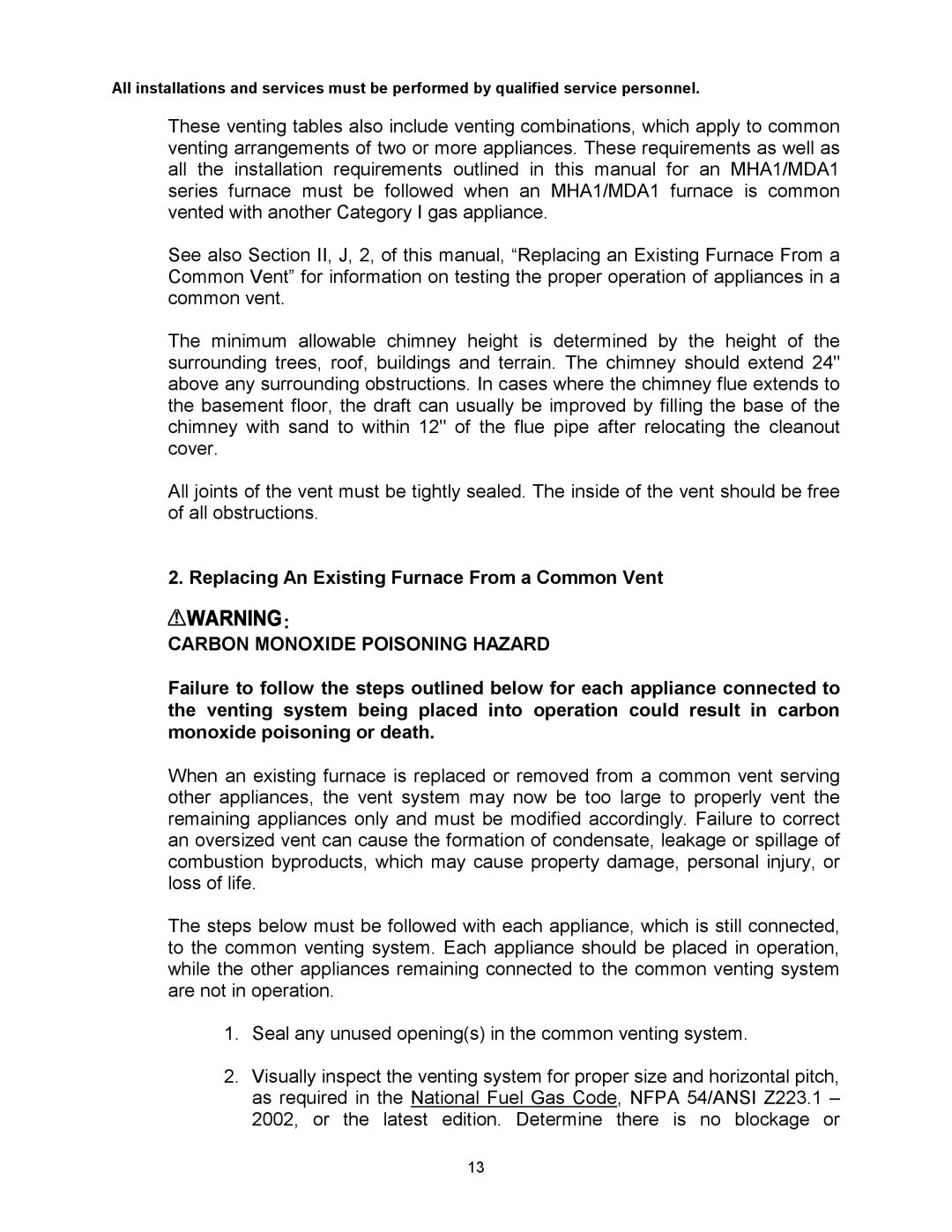All installations and services must be performed by qualified service personnel.
These venting tables also include venting combinations, which apply to common venting arrangements of two or more appliances. These requirements as well as all the installation requirements outlined in this manual for an MHA1/MDA1 series furnace must be followed when an MHA1/MDA1 furnace is common vented with another Category I gas appliance.
See also Section II, J, 2, of this manual, “Replacing an Existing Furnace From a Common Vent” for information on testing the proper operation of appliances in a common vent.
The minimum allowable chimney height is determined by the height of the surrounding trees, roof, buildings and terrain. The chimney should extend 24" above any surrounding obstructions. In cases where the chimney flue extends to the basement floor, the draft can usually be improved by filling the base of the chimney with sand to within 12" of the flue pipe after relocating the cleanout cover.
All joints of the vent must be tightly sealed. The inside of the vent should be free of all obstructions.
2. Replacing An Existing Furnace From a Common Vent
![]()
![]()
![]()
![]()
![]()
![]()
![]()
![]()
![]()
![]()
![]()
![]()
![]()
![]()
![]()
![]()
![]()
![]() :
:
CARBON MONOXIDE POISONING HAZARD
Failure to follow the steps outlined below for each appliance connected to the venting system being placed into operation could result in carbon monoxide poisoning or death.
When an existing furnace is replaced or removed from a common vent serving other appliances, the vent system may now be too large to properly vent the remaining appliances only and must be modified accordingly. Failure to correct an oversized vent can cause the formation of condensate, leakage or spillage of combustion byproducts, which may cause property damage, personal injury, or loss of life.
The steps below must be followed with each appliance, which is still connected, to the common venting system. Each appliance should be placed in operation, while the other appliances remaining connected to the common venting system are not in operation.
1.Seal any unused opening(s) in the common venting system.
2.Visually inspect the venting system for proper size and horizontal pitch, as required in the National Fuel Gas Code, NFPA 54/ANSI Z223.1 – 2002, or the latest edition. Determine there is no blockage or
13
